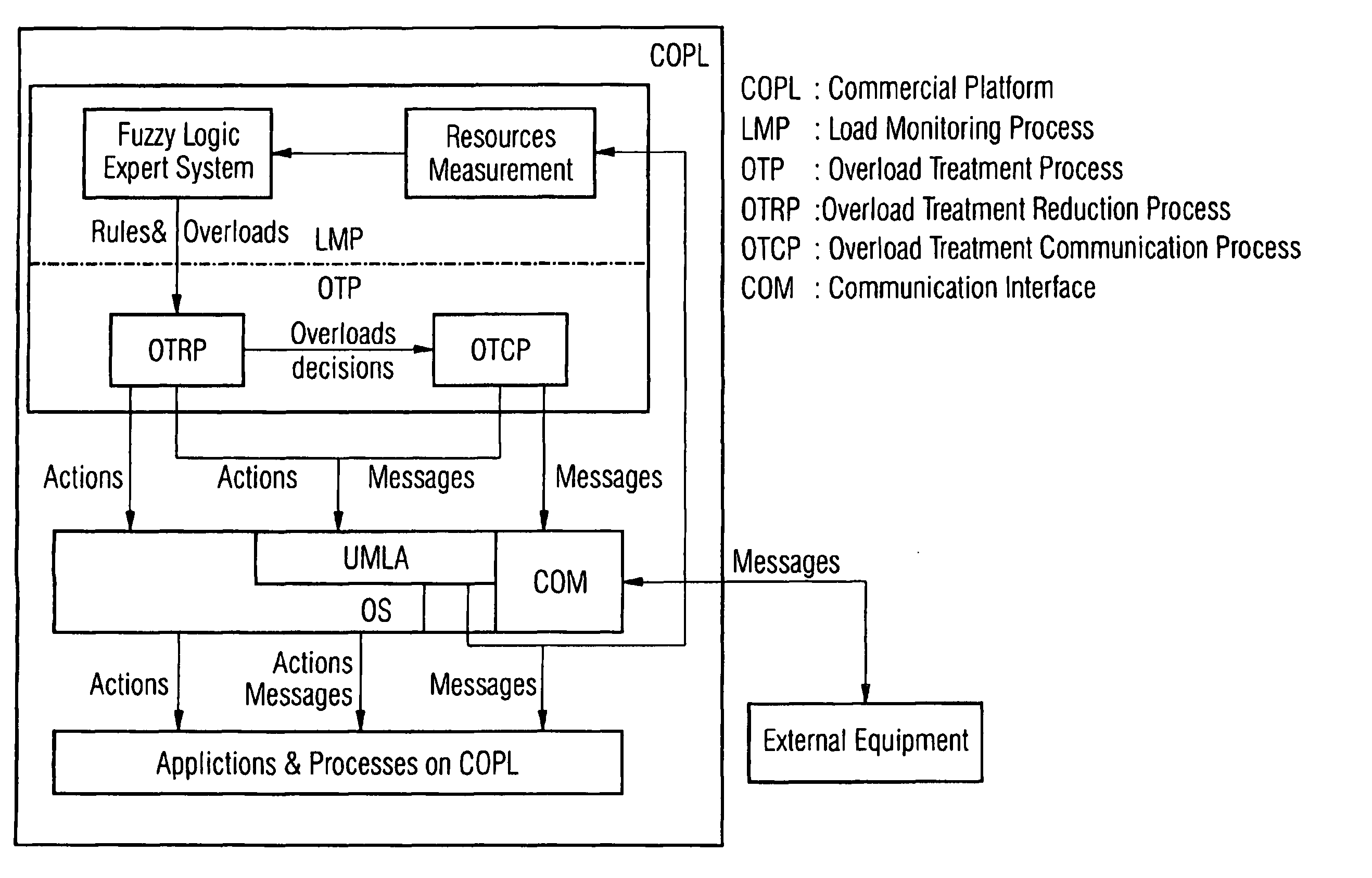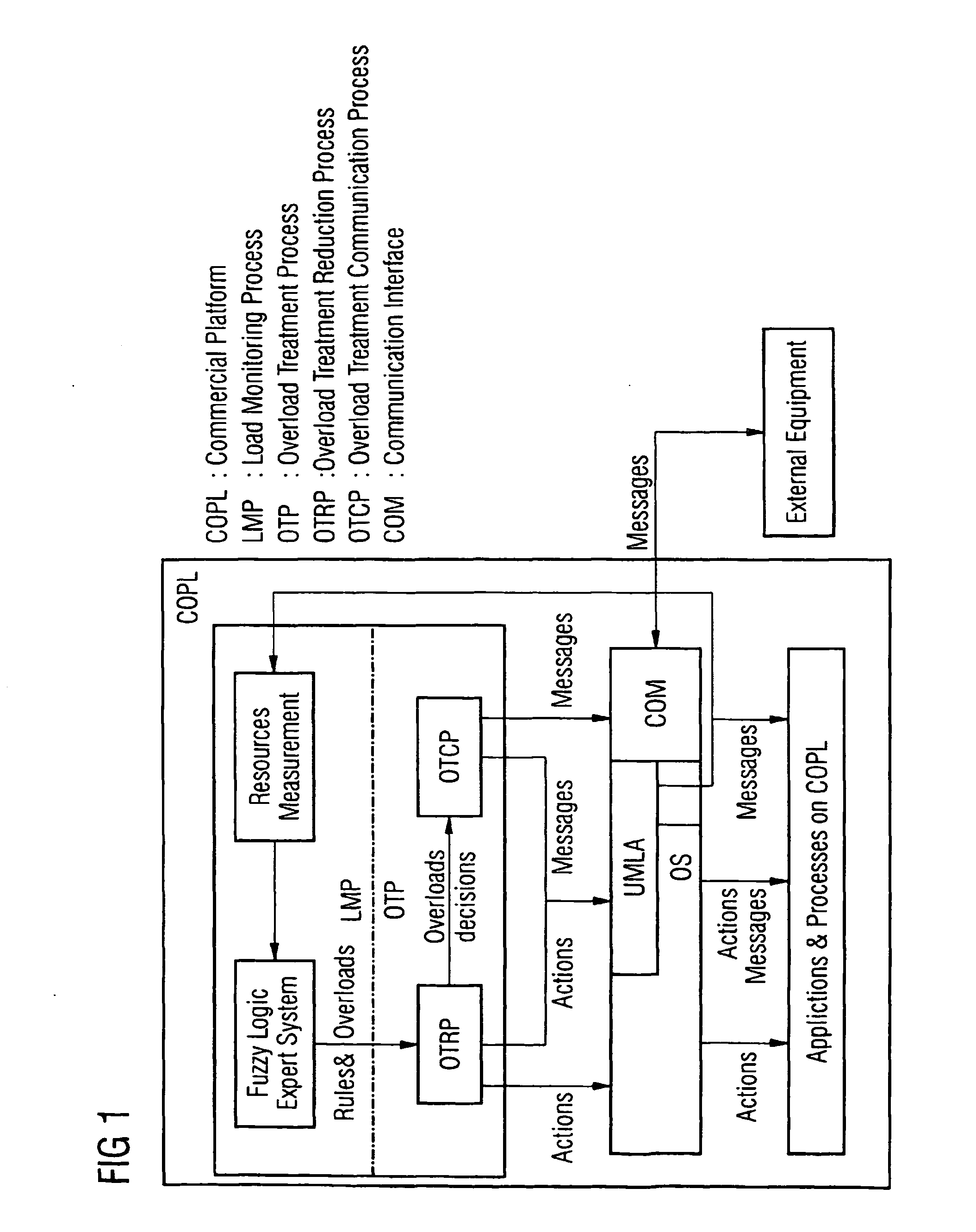Fuzzy logic based intelligent load control for multimedia and telecommunication systems
a multimedia and telecommunications system technology, applied in the direction of program control, multi-programming arrangements, instruments, etc., can solve the problems of internet services server being overloaded, internet services server being saturated (overloaded), server suffering severe performance degradation, etc., and achieves the effect of increasing the priority factor
- Summary
- Abstract
- Description
- Claims
- Application Information
AI Technical Summary
Benefits of technology
Problems solved by technology
Method used
Image
Examples
example
[0205] For the CtD application, new incoming requests should be stopped already within the PINT+ GW Application by setting the overload level of the PINT+ GW Application high enough to stop processing of new incoming requests.
[0206] If the PINT+ GW Application is shared by other applications than the CtD application and these applications have a higher service priority level, then the overload level of the CtD application shall be set so that it does not authorize new sessions and the PINT+ GW application shall stay as before.
[0207] Concretely, if the NOM detects an overload situation, it enters the OOM. The OOM then tests the overload status of the CtD application and the PINT+ GW application. If the CtD application is the only connected application to the PINT+ GW (see Rule 1), then the PINT+ GW application gets a higher overload level and starts rejecting new incoming requests. If the CtD application shares the PINT+ GW with other applications having a higher priority level (se...
PUM
 Login to View More
Login to View More Abstract
Description
Claims
Application Information
 Login to View More
Login to View More - R&D
- Intellectual Property
- Life Sciences
- Materials
- Tech Scout
- Unparalleled Data Quality
- Higher Quality Content
- 60% Fewer Hallucinations
Browse by: Latest US Patents, China's latest patents, Technical Efficacy Thesaurus, Application Domain, Technology Topic, Popular Technical Reports.
© 2025 PatSnap. All rights reserved.Legal|Privacy policy|Modern Slavery Act Transparency Statement|Sitemap|About US| Contact US: help@patsnap.com



